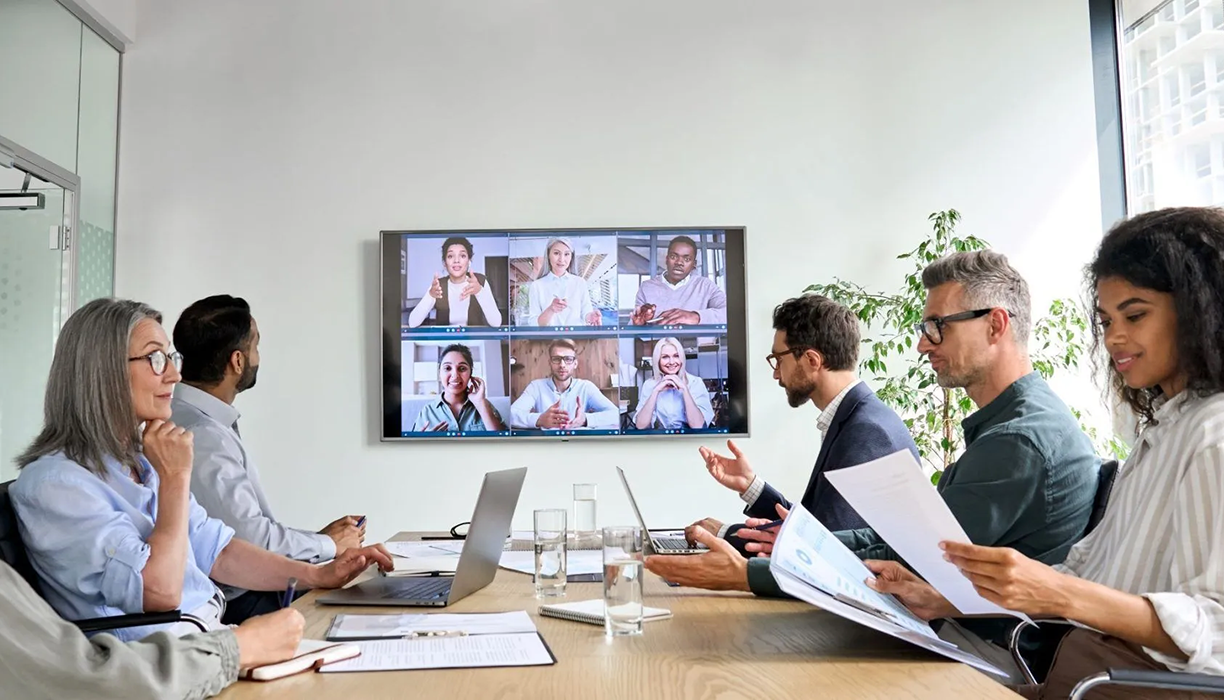Remote Video Conferencing System
Remote video conferencing systems can be divided into software video conferencing terminals and hardware video conferencing terminals based on their construction methods. Generally, they mainly include MCU (Multi-point Control Unit) controllers, conference room terminals, PC desktop terminals, telephone access gateways, and other parts. In terms of conference quality, they can be further categorized into standard-definition video conferencing terminals and high-definition video conferencing terminals. Typically, these include high-definition/standard-definition video conferencing terminals and cameras, omnidirectional microphones, projectors/large-screen TVs, audio amplifiers, etc.
Issues Addressed by Remote Video Conferencing Systems for Enterprises
1. Enhanced Communication Efficiency:Through video conferencing, enterprises can transcend geographical boundaries and achieve instant, face-to-face communication. Employees can quickly join meetings regardless of their location, reducing travel time and costs while improving communication efficiency.
2. Reduced Operational Costs:
Traditional meeting modes often incur significant travel and venue rental expenses. Video conferencing systems can reduce or eliminate these costs, helping enterprises save expenses and lower operational costs.
3. Strengthened Team Collaboration:
Video conferencing systems support multi-person online communication and offer screen sharing, file transfer, and other functions, enabling team members to collaborate more closely. Whether for project discussions, presentation showcases, or remote training, tasks can be completed more efficiently.
4. Improved Decision-Making Efficiency:
Senior managers can quickly convene meetings with heads of various branches or departments through video conferencing systems to discuss and make decisions together. This instant communication approach accelerates the decision-making process and enhances decision-making efficiency.
5. Enhanced Customer Interaction:
Enterprises can utilize video conferencing systems for remote meetings with customers to present products, answer questions, and conduct negotiations. This intuitive communication method enhances customer trust and satisfaction, promoting business development.
Emergency Response and Crisis Management:
In emergencies or crises, video conferencing systems can quickly convene relevant personnel for urgent meetings to formulate response measures and decisions. This rapid response capability helps enterprises better address various challenges and risks.
In summary, remote video conferencing systems play a crucial role in modern enterprises, addressing multiple issues and enhancing overall operational efficiency and competitiveness.
